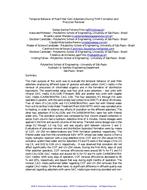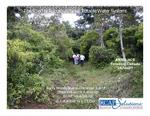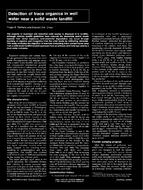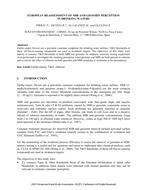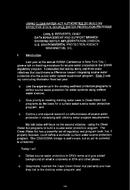Provide PDF Format
AWWA WQTC69425
- Temporal Behavior of Post-Filter GAC Adsorbers during THM Formation and Precursor Removal
- Conference Proceeding by American Water Works Association, 11/01/2008
- Publisher: AWWA
$12.00$24.00
The objective of this study was to evaluate the temporal behavior of post filteradsorbers employing different types of granular activated carbon (GAC) media in theremoval of precursors of chlorinated organics and in the formation of disinfectionbyproducts. The experimental setup was four pilot scale adsorbers, two units withmineral GAC media (CALGON Filtrasorb 300) and another two units with vegetalGAC media (CARBOMAFRA CAG 119). The four adsorbers (F1 through F4) wereoperated in parallel, with the same empty bed contact time (EBCT) of about 20 minutes.Two of them (F1-CALGON and F2-CARBOMAFRA) were fed with filtered waterfrom a Alto da Boa Vista Water Treatment Plant (ABVWTP) which was ozonated priorto feeding, in order to observe any effects of ozonation on the different adsorbers. Theother two adsorbers (F3-CALGON and F4-CARBOMAFRA) were fed with filteredwater only. The ozonation system was composed of four column shaped contactors inseries. Each column had a hydraulic detention time of 4 minutes. Ozone dosages wereapplied in the first and second columns of the series. The total ozone dosage was in therange 0.2 through 1.0 mg O<sub>3</sub>/L and was equally split between columns 1 and 2.Evaluations of precursor removal and disinfection byproduct formation were by meansof COT, UV-254 nm determinations and THM formation potential, respectively. Thefiltered water was from the conventional ABV WTP, whose raw water source is from ahighly eutrophic reservoir with a long detention time. COT and UV-254 values for theozonation system feed water and for adsorbers F3 and F4 were in the ranges 2.0 to 2.5mg C/L and 0.02 to 0.04 cm-1, respectively. It was observed that ozonation did notaffect significantly the COT and UV-254 values. During the first thirty days of postfilter adsorber operation, COT removal efficiencies were around 80 % for F1 and F3(with CALGON GAC media) and around 40 % for F2 and F4 (with CARBOMAFRAGAC media). With sixty days of operation, COT removal efficiencies decreased to 40% and 20%, respectively and stayed that way during eight months of operation. Themineral GAC media performed better regarding COT and UV-254 removals than thevegetal GAC media. On the other hand, no significant difference in effluent quality wasobserved regarding adsorbers with the same GAC media type receiving ozonated and non-ozonated filtered water. Thus ozonation did not seem to affect the adsorbing media.Regarding THM formation, adsorbers F1 and F3 presented a better performance thantheir counterparts (F2 and F4), the same pattern observed regarding COT and U-254removals. During the first thirty days of adsorber operation, THM reduction efficiencieswere about 85 % for F1 and F3 and 50 % for F2 and F4. With eight months ofoperation, such numbers stabilized around 50 % and 30 %, respectively, with adsorberbehavior similar to what happened with regard to COT removal. Continuous, long termoperation of the post filter adsorbers will allow us to assess microbiological effectsassociated to COT removals and THM formation potentials. Includes 7 references, tables, figures.
Related Products
AWWA JAW6173
Journal AWWA - Detection of Trace Organics in Well Water Near a Solid Waste Landfill ..
$15.00 $30.00
AWWA WQTC65889
European Reassessment of MIB and Geosmin Perception in Drinking Waters..
$12.00 $24.00
AWWA ACE95020
Using Clean Water Act Authorities to Build an Effective State Source Water Protection Program..
$12.00 $24.00

